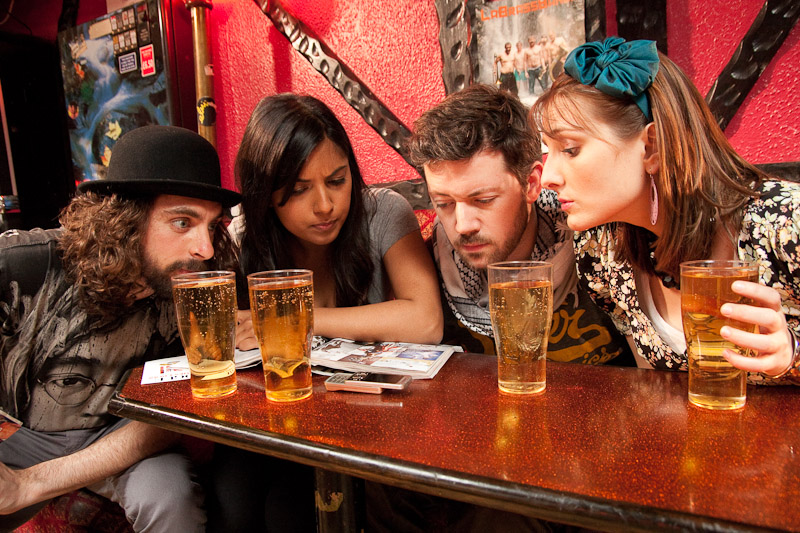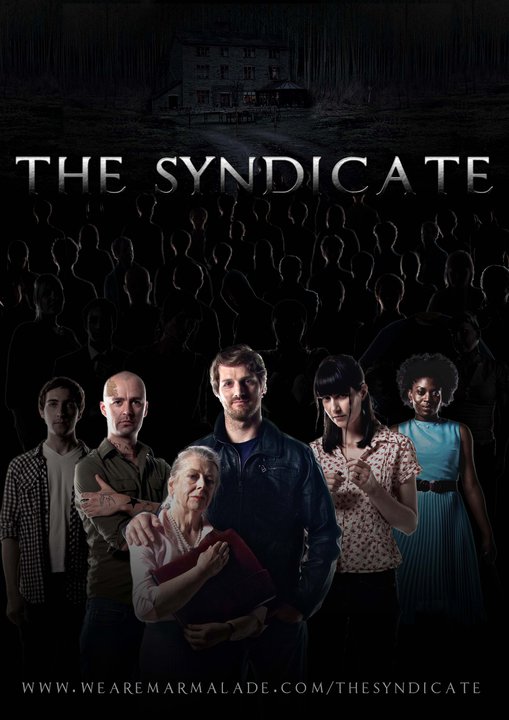
Listen up! - a production still from Camden Calling
I’m often asked the purpose of having a dedicated stills photographer on film shoots. You and I both know that I’m more than a little biased, but the question I would ask is:
If film makers want to attract an audience why would they not have a stills photographer on their film shoot?
My argument is that the production stills photographer is key to the successful marketing of films, television shows, and factual media. Audiences decide what they want to watch based on the publicity generated by the production, the distributors, and the broadcasters.
This publicity almost always uses still images in the Electronic Publicity Kit (the infamous EPK), as well as on web sites, in TV and festival guides, on posters, and as cover art for a whole range of film merchandising. The stills photographer’s images are integral to attracting the film’s audience. Here’s some examples of my publicity stills in use below.
Click on the thumbnails for larger versions
Why can’t film publicists and film makers just use screen captures from the filmed footage for publicity purposes?
Everyone knows that the motion picture camera captures lots of pictures in succession, creating what we watch on our screens. What people don’t realise is that single frames of motion footage are rarely useful as a publicity still image. The reasons for this fall in to two categories:
Technical reasons
“High Definition†may sound like high resolution – but it isn’t. A HD frame is 1920 x 1080 pixels – which is less than a 2 megapixel image. Even low end modern digital SLR cameras these days capture still images at 10 megapixels or more. All those megapixels are needed for print images, as well as allowing for cropping and editing images to create great advertisements.
Also, motion footage is often recorded at shutter speeds that would mean that any movement captured in a single image would be too blurry to make sense to someone looking at a single still. The reason that these images make sense when you are watching the moving footage is the other images (usually 24 frames per second) inform the viewing experience.
In the words of the BBC in relation to its TV commissioning publicity deliverables:
Note that screen grabs taken from the master are of very limited use, (news stories, websites), and are not acceptable for newspaper features or magazines.
Artistic reasons

The Syndicate Promotional poster
Images that make great footage in a film don’t necessarily make great still images. All film footage is recorded in landscape orientation which means the image is wider than it is tall. The stills photographer is not bound by this artistic limitation which means their images have the option of being captured in portrait orientation. Portrait orientation often looks better on posters or where layout of document requires text around a photo.
Finally, and most importantly, still images have to give their own context in a single frame. They don’t have the luxury of the images before and after to impart their message. Many important publicity opportunities such as posters, and news articles simply won’t publish more than one image to convey the publicity message – therefore that one image needs to be striking and informative.
Great images captured by a stills photographer are an important tool to attract an audience to invest their time in viewing the beautiful motion footage captured by the film crew.
Distribution Reasons
I’ve you’ve any plan to seek distribution (which includes TV broadcast) or even acceptance to festivals there will be a list of “deliverables” you will have to supply to accompany your film. Deliverables are the minimum requirements for the film and include lots of boring (but necessary) documentation like evidence of insurances and copies of contracts and clearances as well as various electronic and or analog renditions of the film and its score. Exceptionally important to this is also the press and publicity materials for marketing the film. That means a collection of stills, key art as well as electronic press kit materials.
If your film can’t meet the requirements of a distributor’s deliverables list the distributor won’t buy, nor agree to distribute your film.
Here’s two sample list of deliverables:
- BBC TV Commissioning Publicity Deliverables
- Deliverables: The Technical Elements Required to Release and Distribute a Motion Picture (thanks to Mike Padua for this link)
Still not convinced?
Finally, the on set photographer doesn’t just shoot the action of the production. The stills photographer also shoots cast and crew portraits, character portraits, behind the scenes documentary images and often also images for use as practical effects (set dressing) by the art department. There are many ways that the stills photographer’s work contributes to the production. I’m going to discuss these contributions in future blog posts.
Please feel free to hit me with any comments or questions, I welcome your input (as well as any web traffic you can send my way!).

I have done on set work and it is interesting and varied, it is also long hours and a lot of team work. However I kept getting pestered on one shoot why are you here?
Never got asked that question again after the lead talent got injured and another actress had to redo the role.
All the continuity and costume, effects and a massive pano of the set images were used as reference to reshoot and do cast pickups.
If I had not been there working as hard as I did, the production would have gone downhill.
Suddenly I became the runners and 2nd DOP best mate, even the cameraman became more open. (you need to sometimes match lens for plate shots).
On set photography is important,
Rich
Hi Rich, thanks for your comments. I’m glad I’m not the only one who feels strongly about the value of our work.
Hi I came across this blog today.It’s nice to see someone in the business taking the time to write about it. Production Stills seems quite different from other branches of photography in that is all about collaboration, which sometimes doesn’t come naturally to us photographers
Really interesting & informative blog about a branch of photography many people don’t even know exists. Must be cool shooting different things every day!
Also worth mentioning (and the point that ALWAYS comes back to bite inexperienced filmmakers and producers): A distributor WILL NOT BUY YOUR FILM if you don’t have stills. It’s on the list of deliverables, along with the film itself, when a distributor buys a film. There’s no grey area with that point!
This is really useful to read as I have been clueless about going down the path of doing still photography and the value towards it. Thank you for posting your knowledge on here!
Thanks for your feedback! I’m glad you have found the information useful!